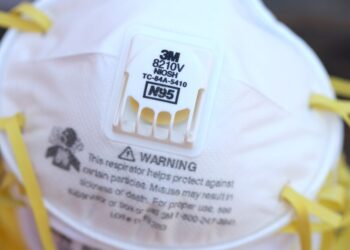Whether it’s our bloodstream, brain, or lungs, microscopic fragments of plastic seem to turn up every time scientists scour a new corner of the human body.
The male reproductive organs are no exception.
New research published this month finds microplastics can build up in the testicles of humans and dogs — raising more questions about the potential health impacts of these particles.
Animal studies have shown exposure to microplastics can impact sperm quality and male fertility, but scientists are still in the early stages of translating this work to human health.
“Microplastics are everywhere,” says Dr. John Yu, a toxicologist in the College of Nursing at the University of New Mexico and lead author of the study. “The quantification of those microplastics in humans is the first step to understanding its potential adverse effects.”
When he set out to do the study, Yu didn’t expect microplastics would have penetrated the male reproductive system so extensively, given the tight blood-tissue barrier around those organs. To his surprise, the research team unearthed a wide range and heavy concentration of microplastics in the testicles of about two dozen men and close to 50 dogs.
The results may also be relevant to a well-documented global decline in sperm count and other problems related to male fertility. This trend has been linked to a host of environmental and lifestyle factors, including certain endocrine-disrupting chemicals found in plastics.
The growing numbers of studies like this one are “compelling and should be a wake up call for policymakers,” says Tracey Woodruff, director of the Environmental Research and Translation for Health…
Read the full article here







